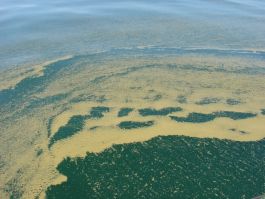Ecology, Energy, EU – Baltic States, Legislation, Markets and Companies, Water
International Internet Magazine. Baltic States news & analytics
Monday, 19.01.2026, 08:46
Almost half of EU freshwaters suffer from chemical pollution
 Print version
Print version |
|---|
Freshwater ecosystems provide a number of important ecosystem services to humans, such as clean drinking water, irrigation, food and recreation. They are also important habitats for wildlife which help to create and maintain these ecosystem services. These important environments can be damaged by organic chemical pollutants from human activities, such as pesticide use or fossil fuel use, which risks the loss of the ecosystem services and biodiversity.
Adequate health quality of almost half of all European freshwaters is at risk from organic chemical pollution, finds new EU research. The study, a continental-scale risk assessment of the potential effects of toxic organic chemicals on freshwater ecosystems, based its conclusions on data for over 200 pollutants measured at 4000 monitoring sites across Europe.
Chemicals’ risks to water
This new study examined the risk posed by these chemicals to freshwater ecosystems at a European continental scale. The researchers used monitoring data (collected in the European Environment Agency's Waterbase database) from 4 000 sites spanning 91 river basins in Europe. These data contained information on the average and maximum annual concentrations of 223 organic chemical pollutants.
They set two 'risk thresholds' for three different groups of indicator species (fish, invertebrates and algae). The first was a high concentration 'acute risk threshold' (ART), likely to cause death, and the second was a lower concentration 'chronic risk threshold' (CRT), likely to cause long-term impacts, for example, decreased breeding rate or increased vulnerability to diseases.
Of the 4 000 sites, 14% were at or above the 'acute risk' threshold, while a further 42% were at or above the 'chronic risk' threshold for at least one species group. Pesticides were responsible for over 80% of total ART accidences for both fish and invertebrates, and 96% of ART accidances for algae.
Other chemicals that caused ARTs to be exceeded were polycyclic aromatic hydrocarbons (released by burning of petroleum products or organic material), brominated diphenyl ethers (used as flame retardants in consumer products) and tributyltin (a biocide used as an anti-fouling agent on ship hulls, now banned in the EU).
Anthropological threat
The chemical risk to freshwater ecosystems was strongly influenced by human land use, with areas of natural vegetation at significantly lower risk of exceeding either ARTs or CRTs than areas of human land use, such as agricultural land or urban areas.
Chemical impacts appeared less severe in Southern Europe. However, the study's authors note that monitoring data were limited for many southern areas.
New data suggests that the results indicate significant pollution on a continental scale, which may still underestimate the level of damage to Europe's freshwater ecosystems, not least because there is a need to consider the overall 'toxic pressure' on those ecosystems — from mixtures of chemicals in particular.
The Environmental Agency’s data recommend large-scale integrated solutions, building on existing chemicals and water legislation in Europe, such as REACH and the Water Framework Directive, to take a more holistic approach to preventing chemical pollution.
Among other pollution-prevention recommendations, the Agency proposes designing chemicals using 'green chemistry' principles, the use of non-chemical substitutes, upstream treatment of unavoidable effluents, closed cycles of chemicals, and new approaches in communication and education.
Sources:
= News Alert, Science for Environmental Policy, Issue 401, 29.01.2015;
= Malaj, E., von der Ohe, P. C., Grote, M., et al. (2014). Organic chemicals jeopardize the health of freshwater ecosystems on the continental scale. Proceedings of the National Academy of Sciences of the United States of America 111(26): 9549–54. DOI:10.1073/pnas.1321082111.
More information about the issue: Chemicals, Water








 «The Baltic Course» Is Sold and Stays in Business!
«The Baltic Course» Is Sold and Stays in Business!

